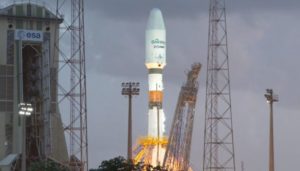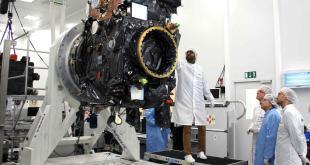
On 27 February 2019 at 21.37 UTC the first six satellites of OneWeb’s constellation were successfully launched on a Soyuz rocket from the Kourou spaceport. These six satellites form part of a constellation to be made up initially by 648 low earth orbit (LEO) satellites, possibly building up to over 900 as needed to meet clients’ growing needs.
OneWeb’s constellation, the biggest broadband satellite system ever developed, will provide connectivity for billions of users around the whole world, taking communications networks to areas that would otherwise be unconnected. The system can give global 3G, LTE, 5G and Wifi access at affordable prices to users right around the world.
This launch marks the transition from successful proof-of-concept to the commercialization of OneWeb “for everyone, everywhere”, all in the interests of bridging the so-called digital divide. OneWeb has now struck out on the deployment of the biggest satellite constellation ever produced; from the end of this year it will regularly be launching about 30 satellites a month.
To set an eyecatching example, OneWeb has undertaken to connect up 6 schools in formerly unconnected regions of the world: Alaska, Nepal, Honduras, Ecuador, Rwanda and Kyrgyzstan.
GMV, undisputed number one in the supply of control centers for satellites of all types, will be helping to achieve all the above goals.
In 2016 GMV won the contract for developing the command and control (C2) center of the whole constellation, thus taking on a great challenge.
After weighing up diverse C2 platforms, OneWeb opted for GMV’s product line, capable of meeting OneWeb’s specific and complex needs while sticking to a tight development schedule. GMV’s C2 system has been installed in the constellation’s UK and USA operation centers and will be providing access to the command process and telemetry, automation of contacts between the satellites and ground antenna, as well as keeping track of the overall state of the constellation.
GMV’s command and control center includes different solutions from its inhouse real-time product line, such as hifly, for satellite monitoring and control; flyplan, for automation of contacts, and fleetDashboard, developed in collaboration with OneWeb’s operations team, which provides global knowledge on the state of the constellation.





